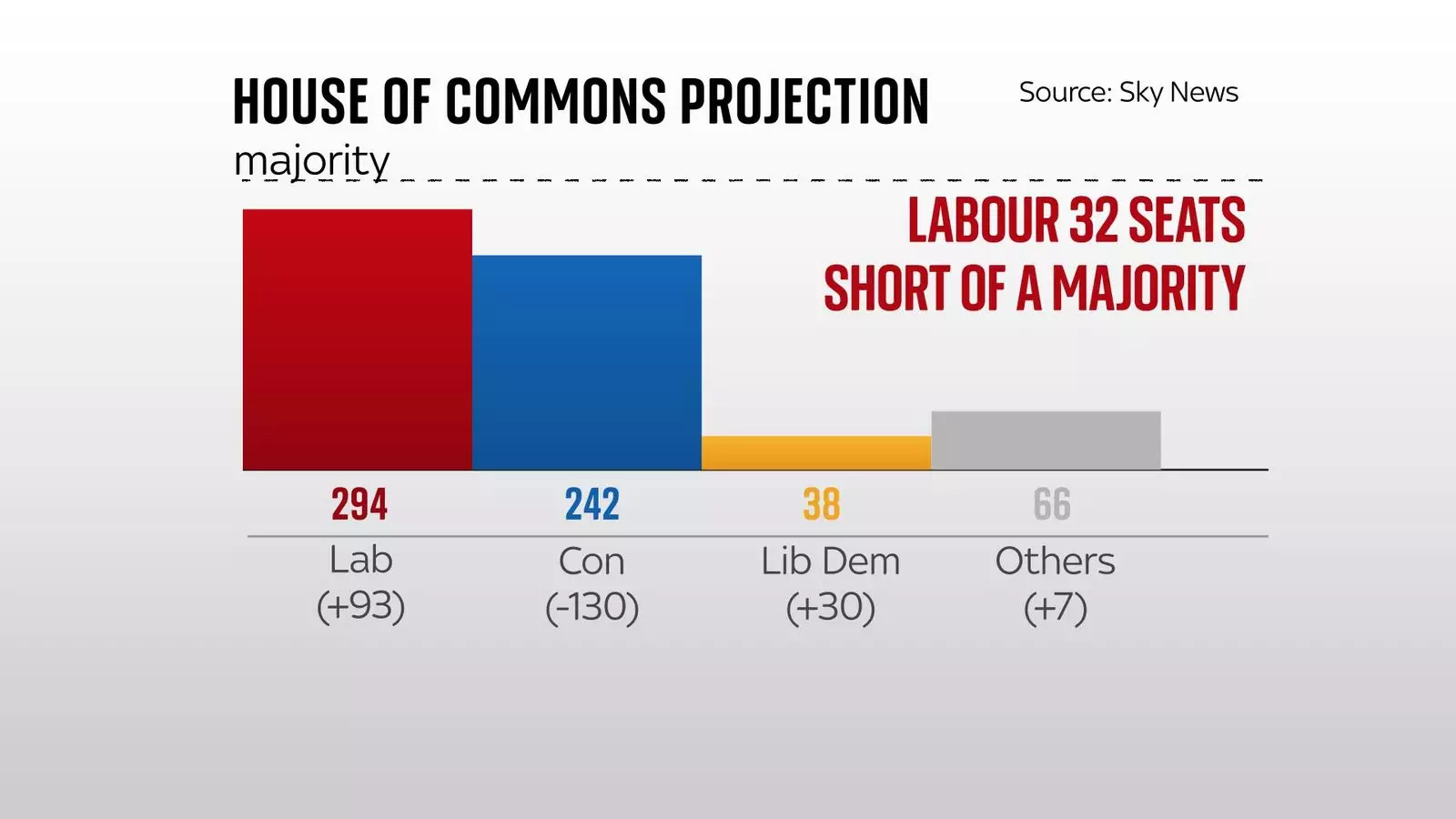Results from two million council wards have been analyzed by Sky News to project voting figures for the upcoming general election. The projections indicate that Labour could potentially become the largest party but may still fall short of a commons majority.
According to the estimates, Labour’s vote share is expected to increase from 33% in 2019 to 35% in the next general election. This uptick in support comes after more than half of the wards have declared their results. Despite this increase, Labour would still not secure an overall majority in the House of Commons.
The projections also show that the Liberal Democrats are anticipated to have a vote share of 16%, marking a five percentage point increase from the 2019 election. However, it is noted that the party traditionally performs better in local council elections compared to parliamentary elections.
Other parties, including the Greens, Reform, and independents, are projected to secure 22% of the vote share. These projections assume that the votes for nationalist parties in Scotland and Wales, as well as the seats in Northern Ireland, remain unchanged. Based on these estimates, Labour is forecasted to win 294 seats, leading to a potential overtaking of the Conservatives in terms of seats, but falling short of an overall majority.
Despite the overall projections, there are individual constituencies where the local vote count suggests a different outcome than the uniform swing analysis. For example, constituencies like Aldershot and Plymouth Moor View may fall to Labour when considering local ward votes. On the other hand, constituencies like Blackburn and Oldham West show independents winning, affecting Labour’s seat tally. This variability reflects the complexity of predicting election outcomes.
The projections also highlight a trend of voters increasingly supporting smaller parties in local elections. This year, there is a notable swing away from Labour towards independents in certain regions, underscoring the diversification of political support.
The projections for the upcoming general election demonstrate both opportunities and challenges for Labour, as well as the broader political landscape in the UK. Despite the potential increase in vote share, Labour’s path to an overall majority remains uncertain, influenced by various factors such as regional dynamics and voter preferences.

Leave a Reply